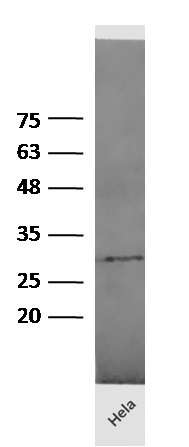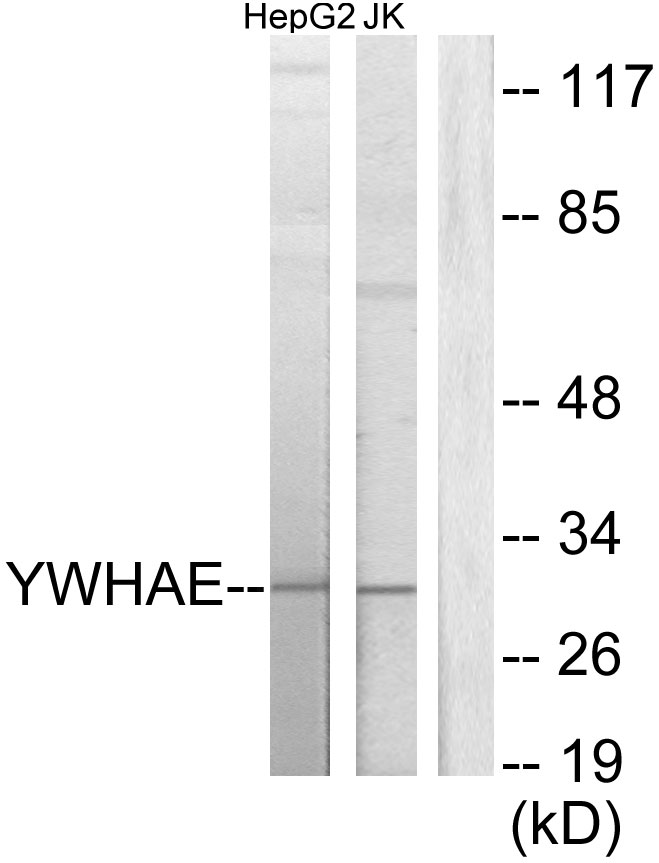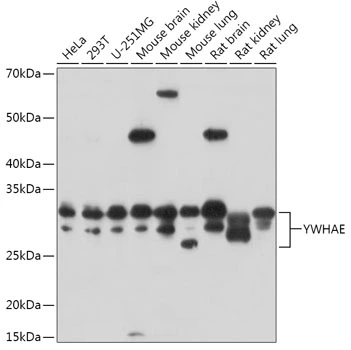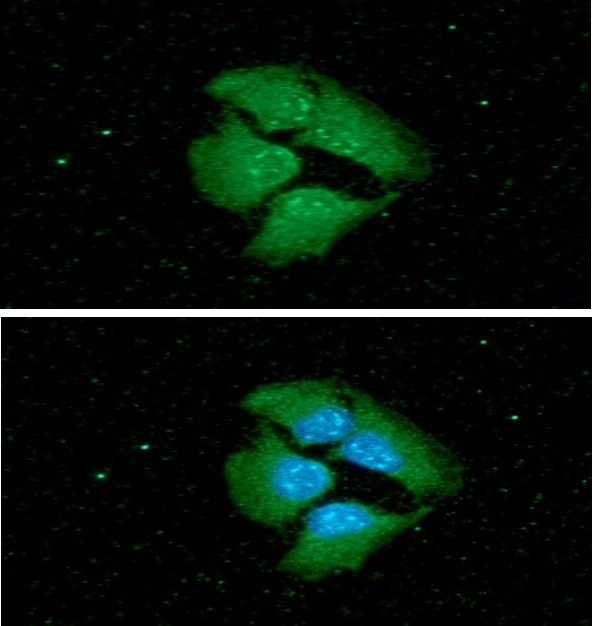14-3-3 epsilon antibody [N1C3]
GTX109090
ApplicationsImmunoFluorescence, ImmunoPrecipitation, Western Blot, ImmunoCytoChemistry, ImmunoHistoChemistry, ImmunoHistoChemistry Paraffin
Product group Antibodies
ReactivityHuman, Mouse
TargetYWHAE
Overview
- SupplierGeneTex
- Product Name14-3-3 epsilon antibody [N1C3]
- Delivery Days Customer9
- Application Supplier NoteWB: 1:1000-1:10000. ICC/IF: 1:100-1:1000. IHC-P: 1:100-1:1000. IP: 1:100-1:500. *Optimal dilutions/concentrations should be determined by the researcher.Not tested in other applications.
- ApplicationsImmunoFluorescence, ImmunoPrecipitation, Western Blot, ImmunoCytoChemistry, ImmunoHistoChemistry, ImmunoHistoChemistry Paraffin
- CertificationResearch Use Only
- ClonalityPolyclonal
- Concentration1.3 mg/ml
- ConjugateUnconjugated
- Gene ID7531
- Target nameYWHAE
- Target descriptiontyrosine 3-monooxygenase/tryptophan 5-monooxygenase activation protein epsilon
- Target synonyms14-3-3E, HEL2, KCIP-1, MDCR, MDS, 14-3-3 protein epsilon, 14-3-3 epsilon, epididymis luminal protein 2, mitochondrial import stimulation factor L subunit, protein kinase C inhibitor protein-1, tyrosine 3-monooxygenase/tryptophan 5-monooxygenase activation protein, epsilon polypeptide, tyrosine 3/tryptophan 5 -monooxygenase activation protein, epsilon polypeptide
- HostRabbit
- IsotypeIgG
- Scientific DescriptionThis gene product belongs to the 14-3-3 family of proteins which mediate signal transduction by binding to phosphoserine-containing proteins. This highly conserved protein family is found in both plants and mammals, and this protein is 100% identical to the mouse ortholog. It interacts with CDC25 phosphatases, RAF1 and IRS1 proteins, suggesting its role in diverse biochemical activities related to signal transduction, such as cell division and regulation of insulin sensitivity. It has also been implicated in the pathogenesis of small cell lung cancer. Two transcript variants, one protein-coding and the other non-protein-coding, have been found for this gene. [provided by RefSeq]
- ReactivityHuman, Mouse
- Storage Instruction-20°C or -80°C,2°C to 8°C
- UNSPSC12352203
References
- Iwahori S, Umaña AC, Kalejta RF, et al. Serine 13 of the human cytomegalovirus viral cyclin-dependent kinase UL97 is required for regulatory protein 14-3-3 binding and UL97 stability. J Biol Chem. 2022,298(11):102513. doi: 10.1016/j.jbc.2022.102513Read this paper
- Yang YF, Lee YC, Wang YY, et al. YWHAE promotes proliferation, metastasis, and chemoresistance in breast cancer cells. Kaohsiung J Med Sci. 2019,35(7):408-416. doi: 10.1002/kjm2.12075Read this paper
- Brandi J, Dalla Pozza E, Dando I, et al. Secretome protein signature of human pancreatic cancer stem-like cells. J Proteomics. 2016,136:1-12. doi: 10.1016/j.jprot.2016.01.017Read this paper






